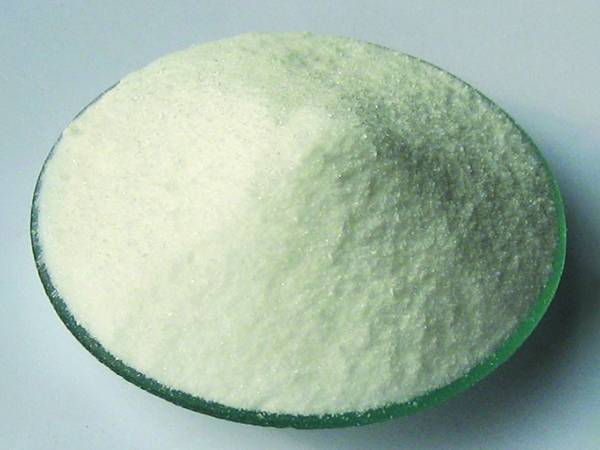



Strontium Carbonate and Its Applications in Industry and Science
Understanding Strontium Carbonate Properties, Uses, and Production
Strontium carbonate (SrCO3) is an inorganic compound that is widely recognized for its unique properties and various applications in different industries. This white crystalline powder is not only important in its own right but also serves as a key intermediate in the production of other strontium compounds. In this article, we will explore the properties, uses, and methods of producing strontium carbonate, highlighting its significance in both industrial and scientific contexts.
Properties of Strontium Carbonate
Strontium carbonate is a stable and insoluble compound, characterized by its white color and crystalline structure. With a molecular weight of approximately 147.63 g/mol, it shares several similarities with other alkaline earth metal carbonates such as calcium carbonate and barium carbonate. Strontium carbonate has a melting point of about 1,580 degrees Celsius and a density of approximately 3.62 g/cm³.
One of the most notable properties of strontium carbonate is its low solubility in water, which makes it an ideal candidate for applications where stability and reactivity are critical. It is, however, soluble in acidic solutions, where it reacts to form strontium salts. This characteristic is particularly useful in analytical chemistry and various industrial processes.
Applications of Strontium Carbonate
Strontium carbonate has a wide array of applications across multiple sectors
1. Ceramics and Glass Industry One of the primary uses of strontium carbonate is in the ceramics industry, where it is used as a flux in glazes and as a sintering agent in the production of porcelain and other ceramic materials. Its ability to lower the melting point of the raw materials allows for the creation of more durable and refined products.
2. Color Television and Display Technologies Historically, strontium carbonate has been utilized in cathode ray tubes (CRTs) for color television sets. The compound emits a bright red color, which is essential for producing high-quality images. Although CRT technology has been largely replaced by LCD and LED screens, strontium carbonate still finds relevance in certain applications involving phosphors and colorants.
3. Pyrotechnics Strontium carbonate is also used in the production of fireworks and flares, where it imparts a brilliant red color. This property is exploited in theatrical performances and celebrations to create vibrant displays, captivating audiences with its bright hues.
carbonate de strontium

4. Medical Applications In the field of medicine, strontium carbonate has garnered attention for its potential benefits in bone health. Strontium ranelate, a compound derived from strontium, is used to treat osteoporosis by promoting bone formation and reducing fracture risk.
5. Chemical Intermediate Strontium carbonate serves as an important precursor in the synthesis of various strontium compounds, such as strontium ferrite, which is used in permanent magnets, and strontium aluminate, utilized in luminescent materials.
Production of Strontium Carbonate
The production of strontium carbonate typically involves several methods
- Natural Sources Strontium carbonate can be obtained from natural strontium minerals, such as celestine (SrSO4). The celestine is treated with an alkali, such as sodium carbonate (soda ash), leading to the precipitation of strontium carbonate.
- Chemical Synthesis Strontium carbonate can also be produced through various chemical reactions, including the reaction of strontium chloride with sodium carbonate. The resulting precipitate is then filtered, washed, and dried to yield strontium carbonate.
- Environmental Considerations As with many industrial processes, the production of strontium carbonate should consider environmental impacts, particularly concerning waste management and emissions. Adopting cleaner production methods can help mitigate any adverse effects associated with its synthesis.
Conclusion
Strontium carbonate is a versatile compound with significant industrial and medical applications. From its role in the ceramics industry to its use in pyrotechnics and healthcare, strontium carbonate demonstrates a remarkable range of utility. Understanding its properties, applications, and methods of production enhances our appreciation of this compound and its importance in various fields. As industries evolve and new technologies emerge, the relevance of strontium carbonate is likely to persist, paving the way for innovations and advancements across multiple sectors.
-
How and Why to Disinfect Water Softeners for Safe, Reliable WaterNewsNov.24,2025
-
Effective Deionized Water Disinfectant Solutions for Healthcare & Industrial UseNewsNov.24,2025
-
Commonly Used Disinfectant for Drinking Water – Global Uses & InnovationsNewsNov.23,2025
-
Chemical to Disinfect Water – Essential Solutions for Safe, Clean Drinking WaterNewsNov.23,2025
-
Blue Water Disinfectant: Safeguarding Global Water Quality with InnovationNewsNov.22,2025
-
Bleaching Powder for Water Disinfection – Affordable & Effective Water Treatment SolutionNewsNov.22,2025
-
Bleaching Powder Drinking Water: Effective, Affordable Disinfection WorldwideNewsNov.21,2025










